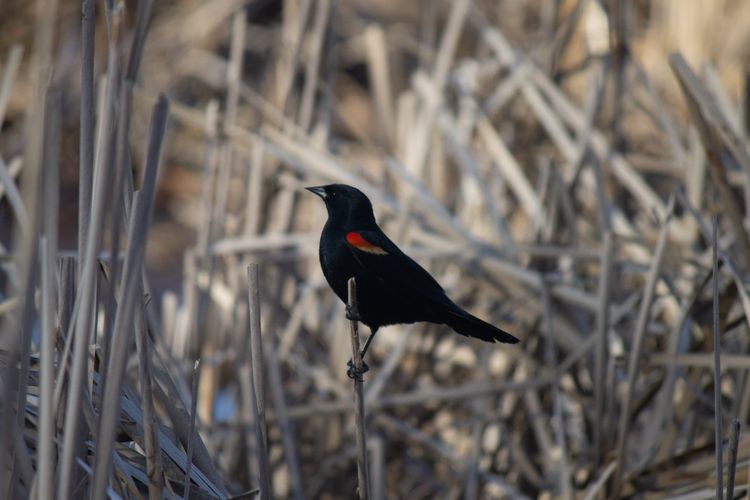
Running Commentary 6/9/2025
Hello,
I have once again gotten myself behind on several main site posts: my Andor season 2 review, my review of Tales of the Underworld, and a dual book review all being drafted.
Anyway...
Playing...
Warframe
We have a new ‘frame, Temple, who is simultaneously our third fire-based and third sound-based warframe. Temple is a damage-focused ‘frame, and is…certainly capable, in that, but I’ve gotta say is also really bland-feeling to play. Frankly, Temple looks pretty bland, too, all big spikes with no texture. Glam rock had its day, but it’s been a punchline for decades, even among its fans and later imitators, so seeing it played straight here, as something to “light the flames of revolution” no less — wasn’t glam rock initially a repudiation of punk rock’s self-seriousness? I’m not a big music guy but I always thought glam rock was more about decadence than revolution — is kind of odd. But I suppose whether you like Temple’s aesthetic will just come down to personal taste.
Temple’s powers are well-balanced and effective but not especially unique to play. The one twist is Temple’s passive ability, which brings the musical element; you have a metronome under your reticle and if you cast abilities in time with this you get a bonus.
- You set off arena rock pyrotechnics under nearby enemies, killing off weak ones and lighting the survivors on fire. This is a cheap, spammable attack used to charge up your exalted weapon by casting in time with your passive.
- You kick out a wave of heat damage in front of you that also leaves enemies more vulnerable to critical damage, doubly so if you cast in time with your passive.
- You become briefly invulnerable and heal yourself. Casting in time with your passive makes the invulnerability last a bit longer and buffs your squad’s weapons with extra heat damage.
- You pull out Temple’s exalted weapon, an infested guitar, and start power chording enemies to death. If you cast this in time with your passive it costs no energy to activate. Also, while the guitar is functionally a beam weapon, if you aim you can hit your ability keys to throw out grenades dealing either viral, magnetic, cold, or corrosive damage. Perhaps this alt-fire would give Temple a use-case against the Profit-Taker Orb?
Overall, I’d say Temple is about the same place Hydroid is in the game right now. If you want to play as Ziggy Stardust, play Temple; if you want to play as Blackbeard, play Hydroid. Either one will be capable on most missions, but neither one really offers anything that unique in their powersets that would prompt a player to pick them over another frame absent a love for their aesthetic. Temple isn’t a bad ‘frame by any means but isn’t one I expect I’ll play a great deal going forward.
Eating...

Vernors Black Cherry
(I guess this is technically a Drinking…)
Vernors, for those unaware, is a ginger ale from out of Detroit (though it’s presently a brand owned by Keurig Dr. Pepper). Specifically it is a “golden” ginger ale of the sort that’s fallen out of favor nationwide in the face of “dry” ginger ales, such as Canada Dry. Vernors is much stronger tasting, both sweeter and more gingery, than dry ginger ales, and it’s somewhat polarizing among Michiganders; I like it, but I can understand those who don’t. But I’m not writing about regular Vernors; I’m writing about the black cherry version, the limited edition offering that’s been available intermittently for the past few years.
Black cherry Vernors is, in a word, medicinal. Now, I’ve been known to enjoy medicinal-tasting things, to a point, because usually they only taste like the flavoring of medicine and not also the medicine itself whose flavor is being masked. With this, though, the heavy sweetness of the cherry flavor and the usual bitter undercurrent of Vernor’s ginger come together to taste genuinely medicinal. The two flavors don’t go together at all. They fight. The cherry wins, mostly. The drinker does not. This soda is not wholly disgusting; it’s still sweet and fizzy, and ice takes some of the heaviness out of the cherry taste. But soda’s not healthy so it ought to be delicious and this just isn't.

Bird of the Week
If you’re into anything in particular, eventually you’ll be asked to pick a favorite. Among the people in my life, and particularly at work, I’m the bird guy, so I get asked “what’s your favorite bird?” And that’s an unnecessarily difficult question for me to answer. This isn’t the fault of those who ask; they’re entirely reasonable, I’m just an overthinker as to what they’re asking. My favorite birds to go looking for are ducks; the bird that always catches my attention at my feeders is the Baltimore oriole; my favorite drawing I’ve done of a bird is my Harlequin duck. But generally this question is really people asking which bird I think is the most beautiful, and that’s actually a much easier question to answer. I believe it is the Agami Heron.
This is not a bird I’ve seen in person; it lives in Central and northern South America, specifically along secluded woodland streams. And it’s not a famous bird known throughout the world for its beauty, like a macaw or a bird-of-paradise or a peacock. But at some point, I came across a photo of an agami heron — I don’t remember where — and I though that it was the most beautiful bird I’d ever seen, an assessment that has held up since. Part of it is that I just like herons, generally, and always have. I know they can look pretty goofy at times but at their best I’ve always found them pretty striking. As a kid, before I was really into drawing birds, I would doodle great blue herons. and the agami heron is the most beautiful heron; there’s not much debate there.
Unfortunately that beauty is somewhat wasted on one of the most secretive herons. This is a bird of small streams and dense jungle, which generally keeps it away from people. It is not a well-studied bird, though apparently some rookeries have been found which provide those willing to travel a reliable place to see them. Nesting brings these typically solitary birds together in large numbers; one rookery in eastern Ecuador, for instance, was reportedly home to hundreds of agami herons this past March.1
As an aside, it is odd and somewhat incorrect to refer to the places herons nest as “rookeries”; originally that word referred to the large communal nesting grounds of rooks, a kind of crow found in Europe, hence the name.2 Herons ought to nest in a “heronry”, which is a word in use, though Merriam-Webster defines the term as “a heron rookery”,3 which rather demonstrates that it is not the mainstream term. Whatever you call it, and whatever sort of heron has made it, a heron rookery is truly something to witness. I’ve seen a few, all of them made by great blue herons. Like the agami, the great blue nests in trees, though they nest especially high-up in trees for a heron. It’s an incongruous sight, being used to seeing herons alone, quietly wading down by a river bank or pond edge, to see dozens of them up in trees, grunting loudly at one another.
To science, this bird is Agamia agami, with “agami” being a Cayenne word for a forest bird, probably not this heron but rather a sort of chicken-type bird called a trumpeter,4 but that’s something for another Bird of the Week.
- Diaz, Carlos. "Checklist S219113531", eBird.org. https://ebird.org/checklist/S219113531
- Merriam-Webster.com Dictionary, s.v. “rookery,” accessed June 9, 2025, https://www.merriam-webster.com/dictionary/rookery
- Merriam-Webster.com Dictionary, s.v. “heronry,” accessed June 9, 2025, https://www.merriam-webster.com/dictionary/heronry..
- Jobling, J. A. (editor). The Key to Scientific Names in Birds of the World (S. M. Billerman et al. editors), Cornell Laboratory of Ornithology, Ithaca.
Curation Links
Recurring Screens | Nora Claire Miller, The Paris Review
An essay about screensavers, not just a history of the PC idling animations, but about the way relics of a bygone era can close gaps over time, even as some experiences are lost to the past forever.
Little Beagle | Lucy Wooding, the London Review of Books
A review of two histories of spycraft in the court of Elizabeth I of England, which includes summary of such history. The period was a time when the Medieval notion of government as being essentially the hobby of warlords was giving way to modern ideas of professional politicians and administrators. Spies of the era were caught in a similar odd position, wanting to be properly organized intelligence agents but, without an existing espionage apparatus in place, having to properly organize themselves.
The height of folly | Ken Weiss, The Mermaid's Tale
“The most recent is an extensive study in (where else?) Nature Genetics, by a page-load of authors. In summary, the authors found, pooling all the data from many different independent studies in different populations, that at their most stringent statistical acceptance ('significance') level, 697 independent (uncorrelated) spots scattered across the genome each individually contributed in a significance-detectable way to stature. The individual contributions were generally very small, but together about 20% of the overall estimated genetic component of stature was accounted for. However, using other criteria and analysis, including lowering the acceptable significance level, and depending on the method, up to 60% of the heritability could be accounted for by around 9,500 different 'genes'.”
Giselle | Mina Chacko
[FICTION] [VIDEO] A much-abbreviated retelling of Théophile Gautier and Adolphe Adam’s Romantic-era ballet, though set not to Adam’s score but to “Un sospiro” by Franz Liszt, which works well for such a short presentation. (5 minutes)
See the full archive of curations on Notion






Member Commentary